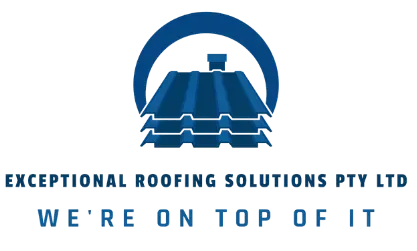As roofing experts, we often encounter roofs that have borne the brunt of Australia’s extreme weather conditions. Our experience has shown that certain climatic events can trigger an urgent need for roof restorations, something every homeowner should be prepared for. Understanding the impact these conditions have on your roofing system is the first step towards maintaining a sturdy and reliable roof over time.
Heavy rainfall, for example, doesn’t merely wet the surface; it can seep through cracks and cause significant structural damage if the roof isn’t in top condition. On the other hand, hailstorms pose a direct threat as the force with which hail hits can bruise or even puncture the roofing material. Then, there’s the potentially damaging impact of high winds, which can rip materials off the roof, leaving it vulnerable to further weather-related damages.
Awareness of these conditions and the ways they affect your roof enhances your home’s safety and preserves its value. For us, ensuring your roof remains in impeccable condition regardless of the weather is our priority. We specialise in identifying signs of wear that could lead to bigger problems and advising on restorative measures to counteract these effects before they lead to severe damage.
The Impact of Heavy Rainfall on Your Roof
When heavy rainfall hits, it can challenge the integrity of your roof in several ways. Water accumulation is the most immediate concern. If your roof is not properly sloped or the drainage systems are blocked, water can pool on the surface. This static water weight can stress your roof structure and, over time, lead to sagging or collapse. More so, roofs with pre-existing minor damages or small cracks can worsen under continuous heavy rains, allowing water to seep through and damage the underlayment or even the internal ceilings and walls.
Prolonged exposure to moisture from heavy rains can also precipitate the growth of mould and mildew on your roof and within your home. This is not just a structural risk; it’s a health hazard, too. Mold thrives in damp environments and can spread quickly if not addressed, potentially harming the air quality inside your home. That’s why we emphasise the importance of regular roof inspections and timely maintenance to prevent these issues and keep your home safe and dry.
How Hailstorms Can Damage Roof Structures
Hailstorms present a more violent threat to your roof’s integrity. The size and speed of hailstones can cause devastating damage to roofing materials. For typical asphalt shingles, hail can knock off the protective granules that guard against rain and sunlight. Once these granules are compromised, the shingles rapidly deteriorate and will no longer provide adequate protection. For metal roofs, large hailstones can leave dents or even puncture the surface, especially if the metal panels are of a thinner gauge.
Additionally, hail can wreak havoc on roof accessories and protruding elements such as skylights, vent covers, and chimney caps. These fixtures often don’t have the resilience that the main parts of the roof possess and can crack or shatter under the impact of hail, leading to leaks. To address this, we conduct detailed inspections after any major hail event and assess the extent of hail damage. Identifying and repairing these vulnerable parts promptly can prevent minor hail damage from leading to significant water ingress and associated problems.
Effects of Continuous Sun Exposure and Heat
Long-term exposure to the harsh Australian sun can significantly wear down your roof. Continuous sun exposure causes thermal shock due to the rapid contraction and expansion of roofing materials as they heat up during the day and cool down at night. This constant movement can lead to material fatigue, causing cracks and splits, particularly in materials like asphalt shingles and certain types of metal roofing. UV rays can also degrade the chemical composition of roofing materials, leading to discolouration and a reduction in the protective oils in asphalt shingles, making them brittle and less waterproof.
As roofing specialists, we see the effects of sun damage on roofs quite often and know well that prevention is better than cure. Regular inspections can help in identifying early signs of heat damage so that corrective actions can be taken promptly to prevent more severe damage. Ensuring your roof is equipped with materials suited to withstand the local climate is also key.
Preventive Measures and Timely Restorations
Taking proactive steps towards maintaining your roof can drastically extend its life and performance. Here are some preventive measures we suggest:
1. Regular Inspections: Schedule inspections at least twice a year and after major weather events to ensure minor damages are dealt with before they escalate.
2. Prompt Repair of Damage: If damage from weather or wear and tear is found, repairing it promptly will prevent further deterioration and protect the underlying structures.
3. Gutter Maintenance: Keep gutters clean and functional to ensure water is effectively diverted away from your roof and foundation.
4. Protective Coatings: Applying protective sealants or reflective coatings can extend the life of your roof by offering additional protection against various weather conditions.
Implementing these measures and committing to regular inspections and maintenance can save you from costly emergency repairs and restorations in the long run.
Conclusion
Protecting your roof from extreme weather and environmental effects involves understanding the potential hazards and taking preventative actions to mitigate these risks. At Exceptional Roofing Solutions, our goal is to keep your roof in prime condition through comprehensive maintenance services and timely roof restorations. If you’re concerned about how weather conditions might be affecting your roof, contact us today. Let us provide expert advice and solutions that ensure your roof remains robust and secure for years to come.
